Ecological and Taxonomic Notes on Calumma radamanus (Mertens, 1933) in the Antalaha Region of Northeastern Madagascar
by Elie Sergio Benarson & Petr Nečas
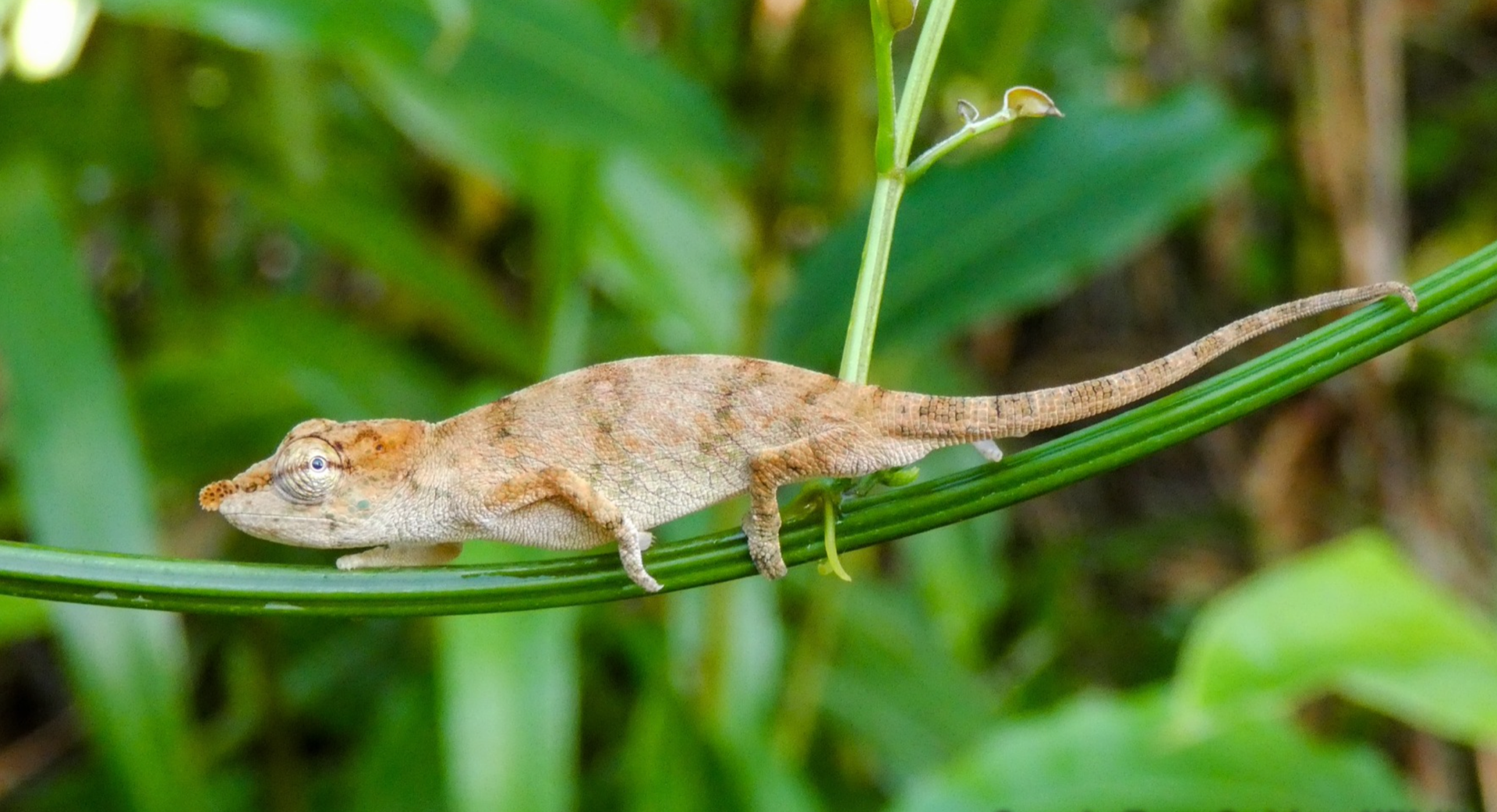
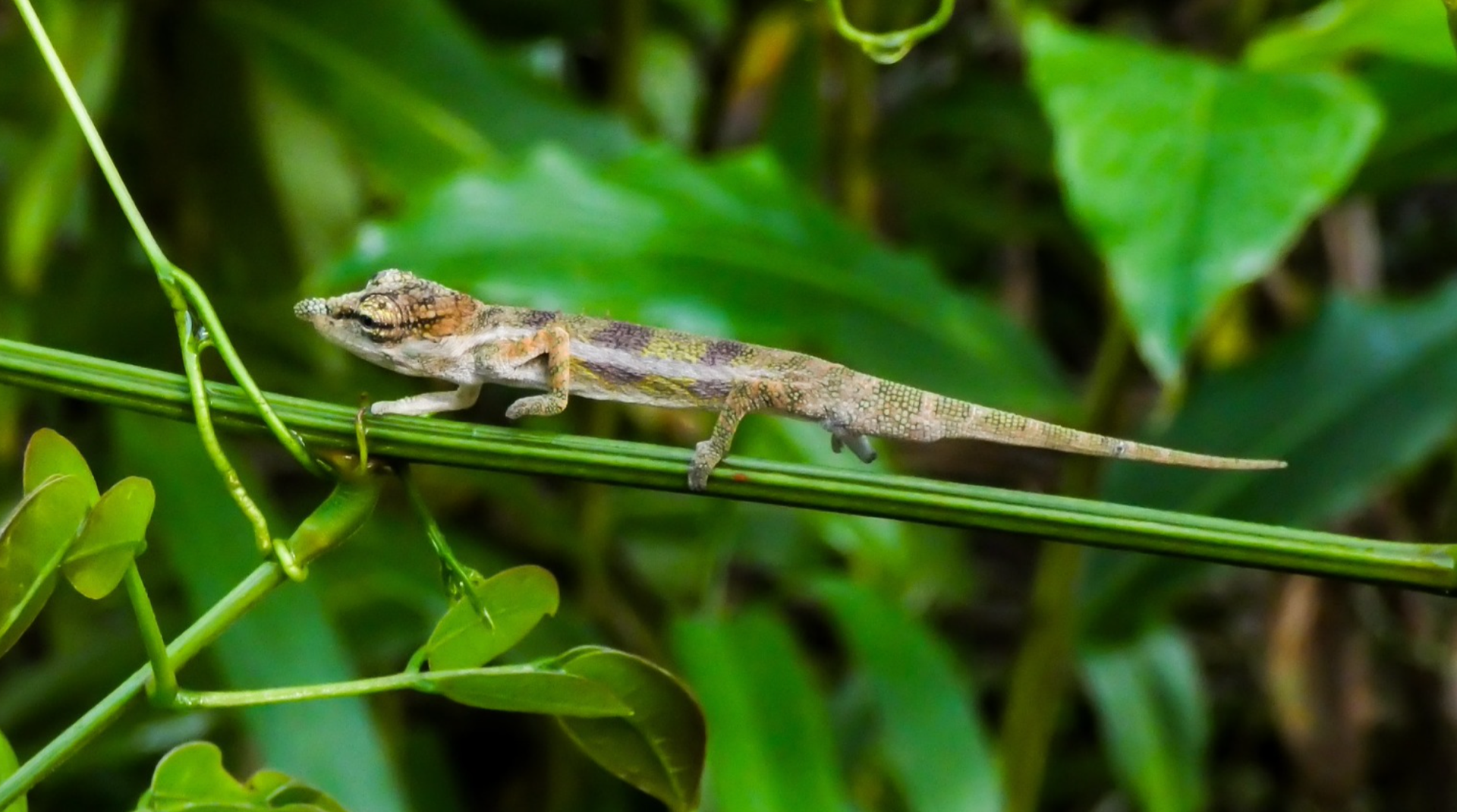
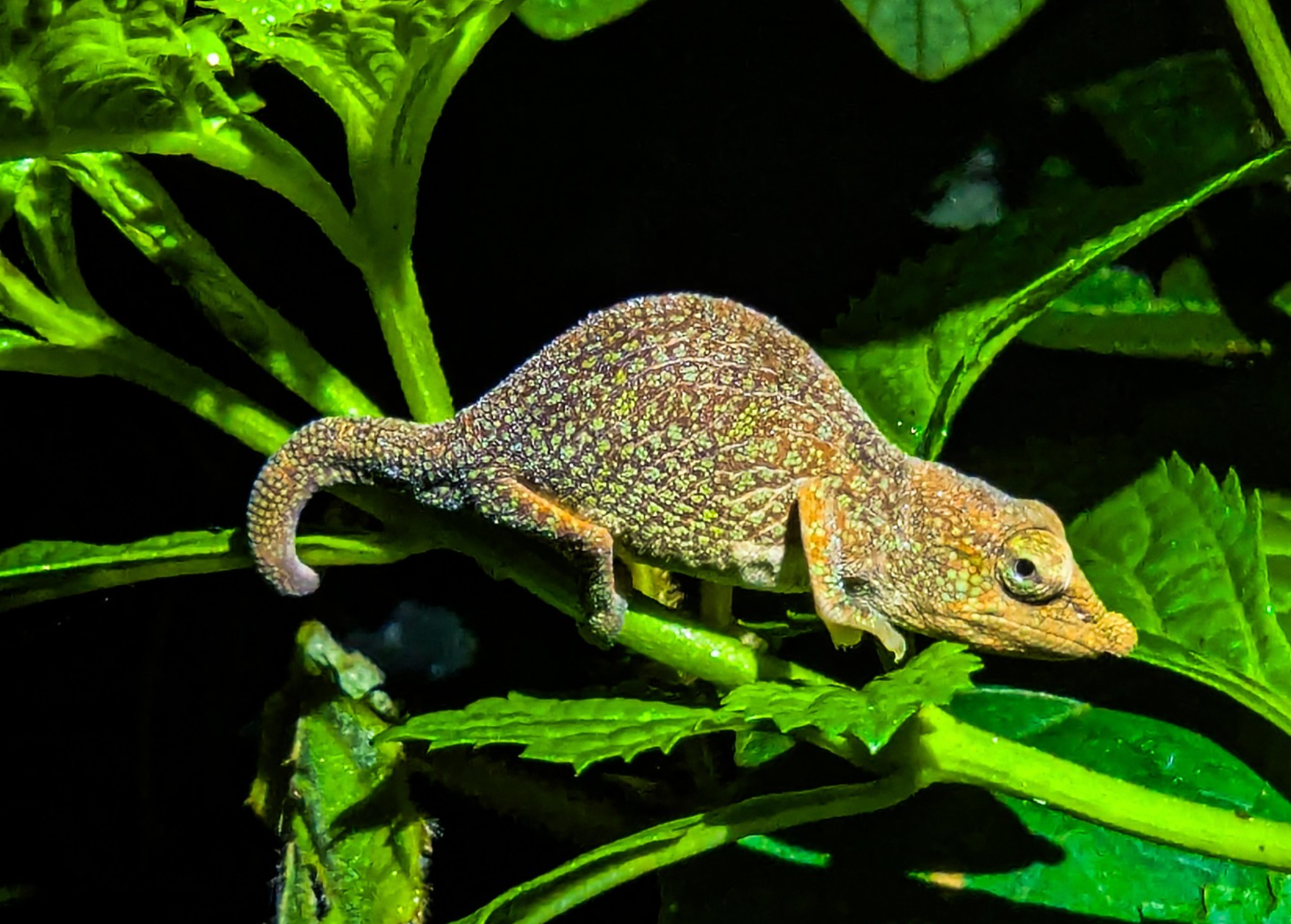
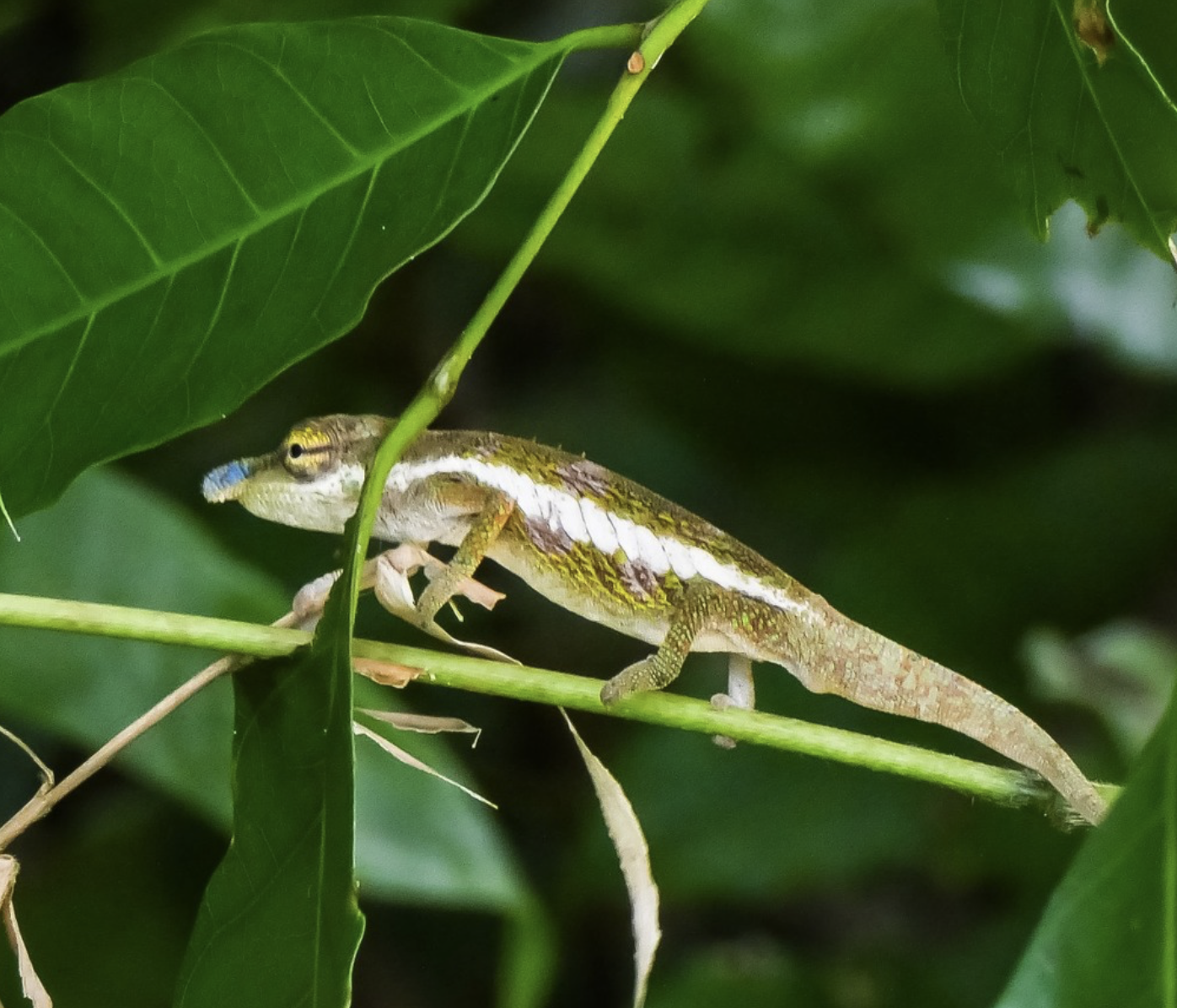
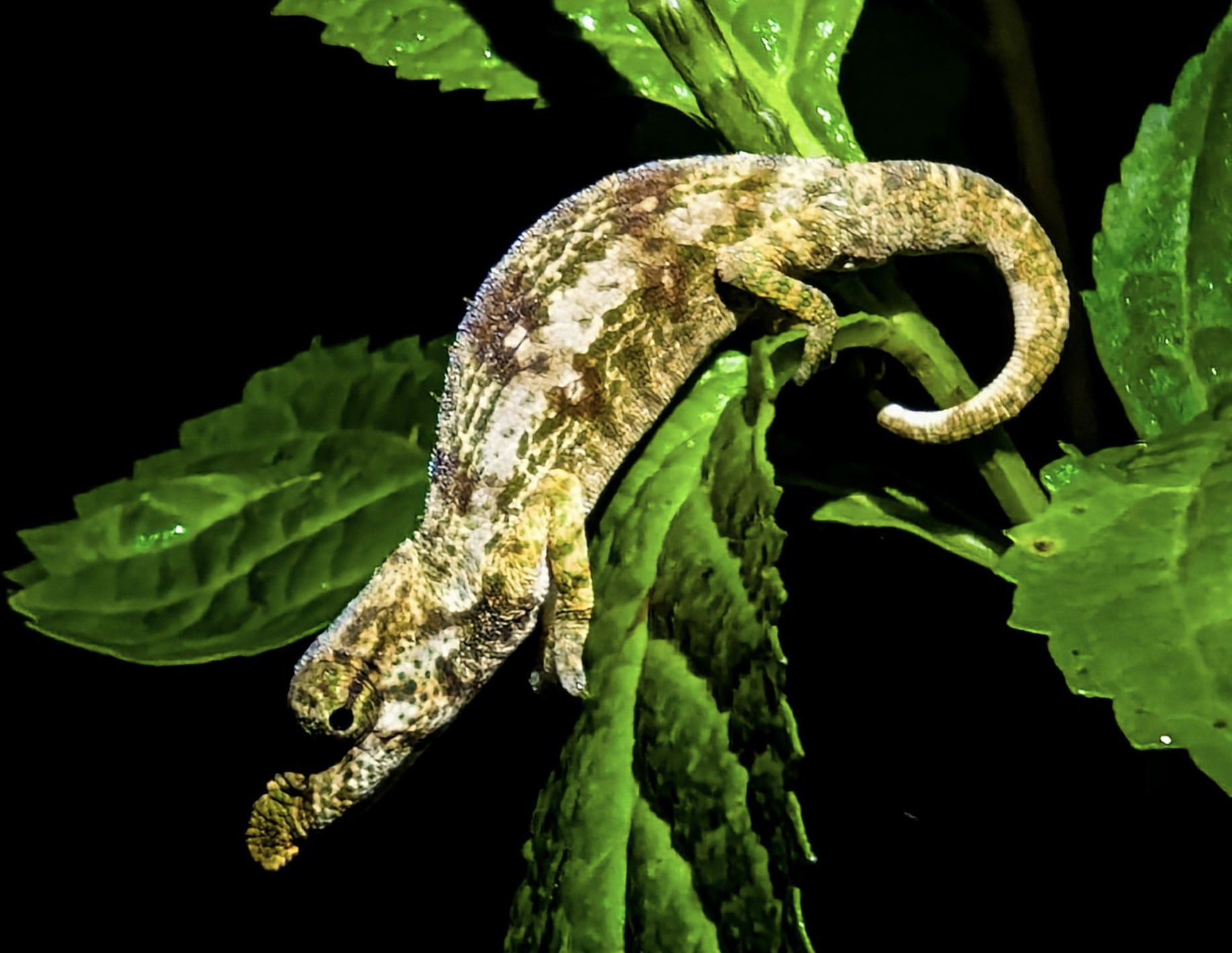
Abstract
Calumma radamanus is a small, soft-nosed chameleon endemic to the humid lowland forests of northeastern Madagascar. Long misclassified within the Calumma nasutum complex, it was revalidated through integrative taxonomic methods combining osteology, external morphology, and genetic data. This paper synthesizes morphological, ecological, and historical information with emphasis on populations in the Antalaha region. The species exemplifies cryptic biodiversity and highlights conservation needs in degraded Malagasy habitats.
Keywords: Madagascar, chameleon, Calumma radamanus, Antalaha, taxonomy, conservation biology, cryptic species
Introduction
Madagascar's reptilian fauna is highly endemic, with the genus Calumma representing an ecologically important group of arboreal chameleons. Calumma radamanus, originally described by Mertens (1933), was previously treated as a synonym of Calumma nasutum (Angel 1942), a classification that persisted for decades. Recent revisions using detailed osteological and genetic analysis by Prötzel & al. (2020) have revalidated C. radamanus as a distinct species, with a distribution restricted to northeastern Madagascar, including regions near Masoala National Park, Nosy Mangabe, Tampolo, and the Makira forest.
Etymology
The name "radamanus" refers to the Col de Pierre Radama, the type locality of the species, which is named in honor of King Radama I of Madagascar (Mertens 1933). According to the International Code of Zoological Nomenclature Article 31.2.2, the name is treated as a noun in apposition and remains unaltered.
Morphological Diagnosis
Specimens of C. radamanus exhibit a suite of distinctive traits. Adults measure 77–93.5 mm in total length, with snout-vent length ranging from 42.6 to 49.2 mm (Prötzel & al. 2020). The rostral appendage, present in both sexes, is short (1.4–1.7 mm), rounded, and oriented downward. The rostral scale is integrated into the appendage, differing from close relatives. Dorsal crest spines number between 6 and 8 in males. Males display greenish coloration with turquoise cheeks and nose, often marked by white lateral stripes and blue blotches. The casque is low in profile (0.8–1.5 mm), and internal cranial morphology reveals the absence of a parietal crest and frontoparietal fenestra. The squamosal bone remains widely separated from the parietal—a key diagnostic feature distinguishing the species from others in the nasutum complex (Prötzel & al. 2020).
Habitat and Distribution
C. radamanus is found in low-elevation rainforests (7–500 m), particularly around the Antalaha region and Bay of Antongil. It prefers understory vegetation with thin-branched plants and is notably adaptable, appearing in secondary forest, edge habitats, and village gardens (Rabearivony & al. 2007). These habitats are increasingly impacted by slash-and-burn agriculture, vanilla plantation expansion, and illegal logging.
Behavior and Ecology
The species is diurnal and arboreal, feeding on small arthropods using its ballistic tongue. At night, individuals shift to a pale beige coloration, presumably for camouflage (Madcham.de 2020). Although little is known about its reproduction, oviposition in soil is inferred, consistent with other Calumma species (Brady & Griffiths 1999).
Taxonomic History
First described by Mertens (1933) based on specimens from the Bluntschli expedition, C. radamanuswas synonymized with C. nasutum (Angel 1942), resulting in decades of taxonomic confusion. Prötzel & al. (2020) resurrected the species using micro-CT imaging, external morphological comparison, and phylogenetic data, clarifying its status. The holotype and paratypes were deposited in European museum collections, although some specimens may be missing.
Conservation Status
Despite lacking formal IUCN assessment, C. radamanus is presumed to be vulnerable due to ongoing deforestation and its limited distribution. Its survival in degraded habitats suggests a degree of ecological flexibility, but long-term conservation requires forest protection and habitat connectivity (Brady & Griffiths 1999; Prötzel & al. 2020).
Conclusion
C. radamanus represents Madagascar's cryptic and localized biodiversity. Its rediscovery and revalidation underscore the importance of detailed taxonomic work for understanding and preserving the island's unique fauna. Focused conservation strategies and ecological monitoring are essential for the species' continued survival in northeastern Madagascar.
References
Angel, F. 1942. Contribution à l'étude systématique des Chamaeleonidae de Madagascar. Mémoires du Muséum National d'Histoire Naturelle 6(2): 183–261.
Brady, L. D., & R. A. Griffiths. 1999. Status Assessment of Chameleons in Madagascar. IUCN Species Survival Commission.
Madcham.de. 2020. Calumma radamanus. Retrieved from https://www.madcham.de/en/calumma-radamanus/
Mertens, R. 1933. Die Reptilien der Madagaskar-Expedition Prof. Dr. H. Bluntschlis. Senckenbergiana Biologica 15: 260–274.
Prötzel, D., M. D. Scherz, F. M. Ratsoavina, M. Vences, & F. Glaw. 2020. Untangling the trees: Revision of the Calumma nasutum complex (Squamata: Chamaeleonidae). Vertebrate Zoology 70(1): 23–59. https://doi.org/10.26049/VZ70-1-2020-3
Rabearivony, J., L. D. Brady, R. K. B. Jenkins, & O. R. Ravoahangimalala. 2007. Habitat use and abundance of a low-altitude chameleon assemblage in eastern Madagascar. Herpetological Journal 17(4): 247–254.

